-
Modelers Alliance has updated the forum software on our website. We have migrated all post, content and user accounts but we could not migrate the passwords.
This requires that you manually reset your password.
Please click here, http://modelersalliance.org/forums/login to go to logon page and use the "Forgot your Password" option.
You are using an out of date browser. It may not display this or other websites correctly.
You should upgrade or use an alternative browser.
You should upgrade or use an alternative browser.
1/72 Kayaba Katsuodori Ramjet Fighter
- Thread starter MichelC
- Start date
Just before buttoning up the fuse I realized I'd forgotten an O2 hose so I made one from fine copper wire wound around a thicker gauge wire.
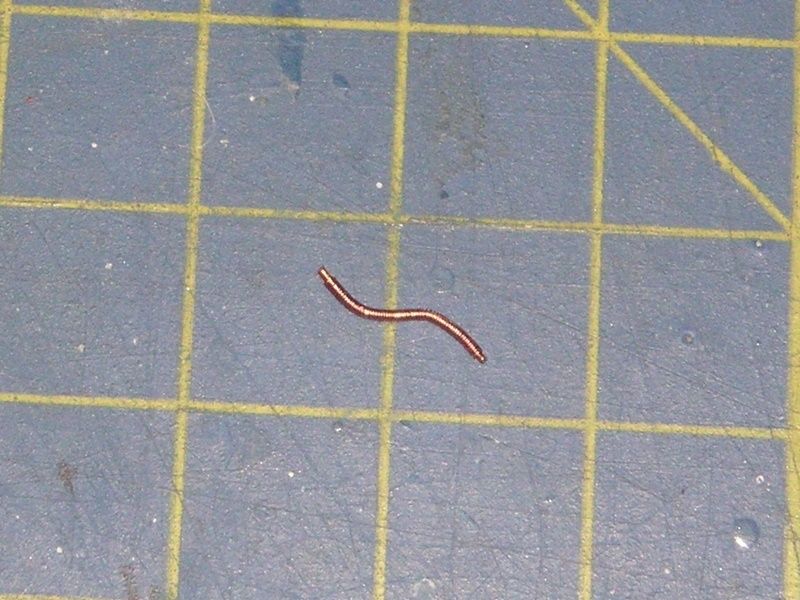
Well, there!
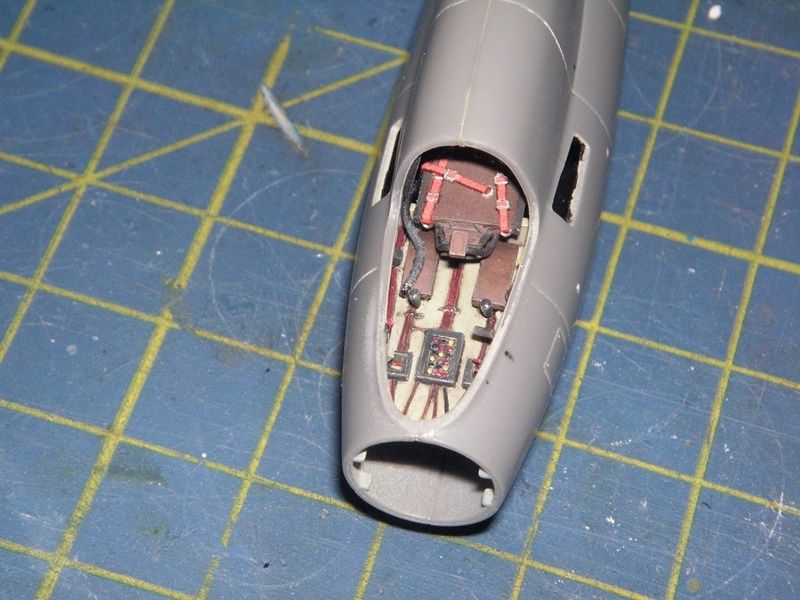
The canpoy was attached with liquid cement, a good, airtight joint. You can see on the pic how well you can see the cockpit detail.
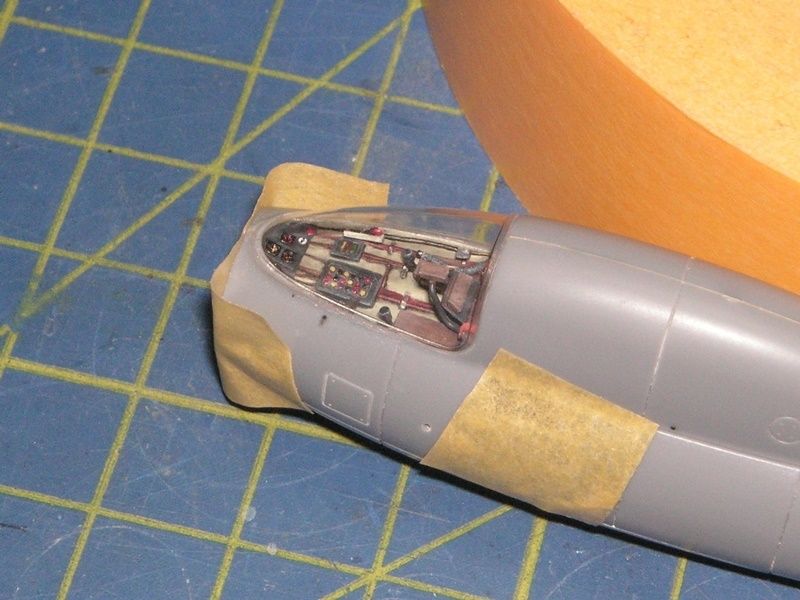
Now it was time to turn to the exterior details and stuff, starting with the rocket boosters.
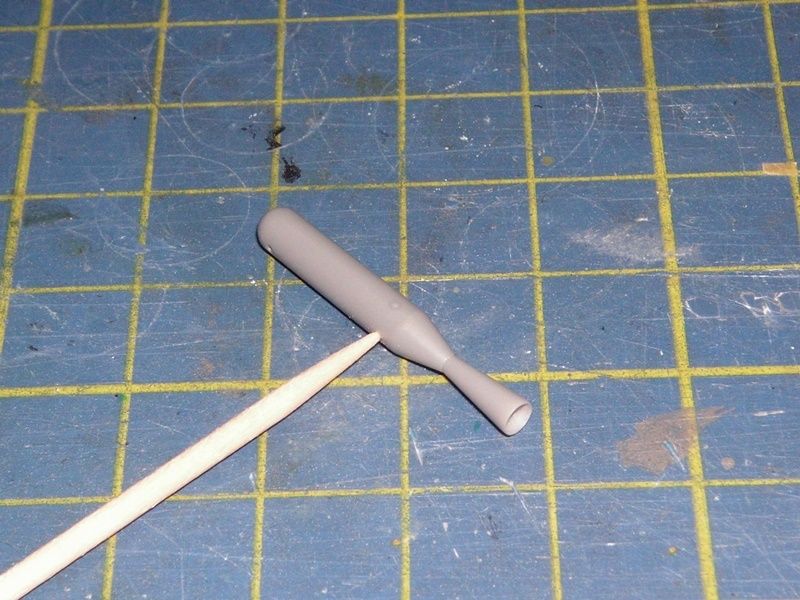
The exhaust lips were thinned to scale and we're good to go!
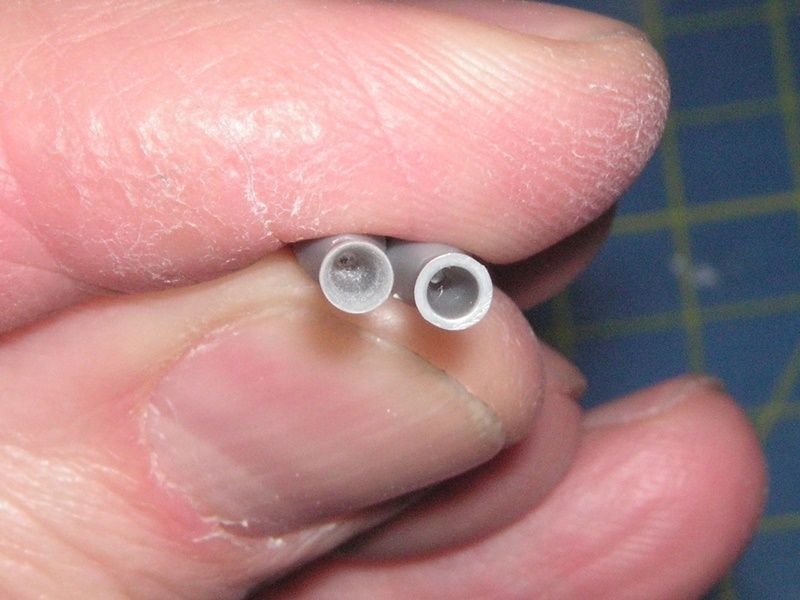
BTW, the Japanese RATOGs weren't very reliable. They had plenty of trouble fine-tuning them. One can only imagine what would have happened if the placement was slightly off-axis or if there was a lag in ignition time...
Next the FOD covers: simple styrene discs with copper wire grab handles. I glued some supports on the inside of the intake and exhaust so that when the covers are put in place at the end of the build they don't fall into the fuse with no way of retrieving them...
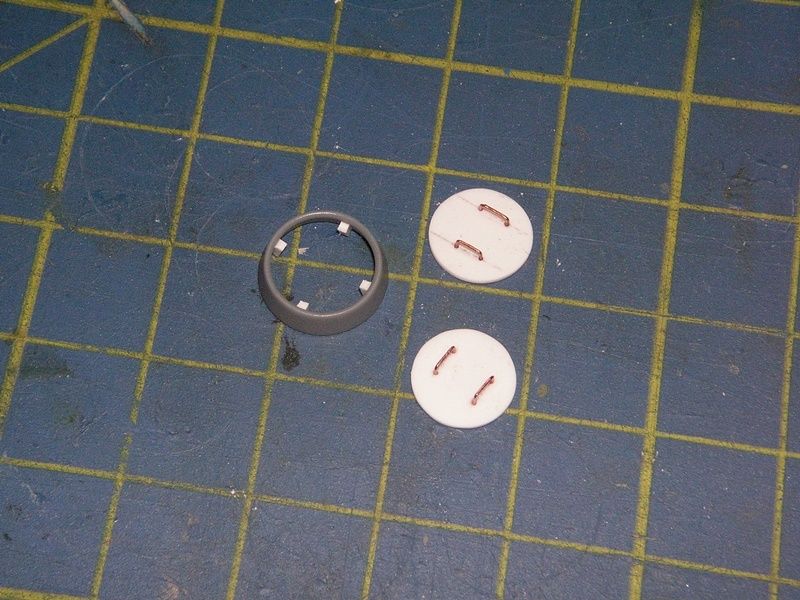
The trolley was detailed somewhat with rubber cushions, a lunette ring and weld seams (made from stretched sprue softened with liquid cement and shaped with a sharp blade) where there were unsightly gaps.
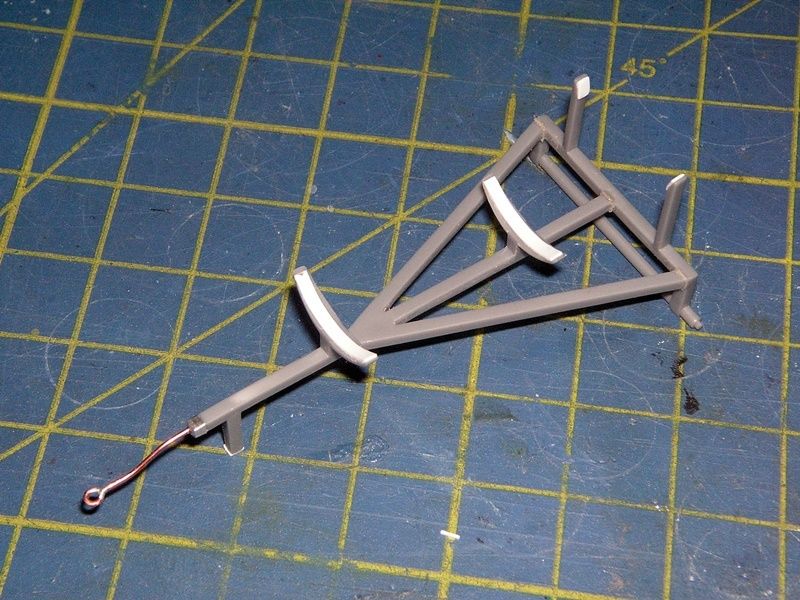
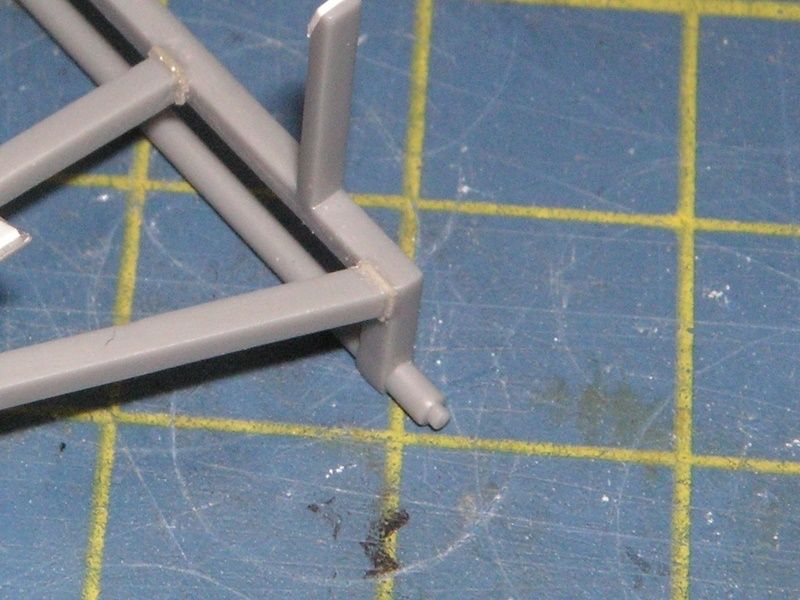
This being a prototype the gun ports were removed by filling them.

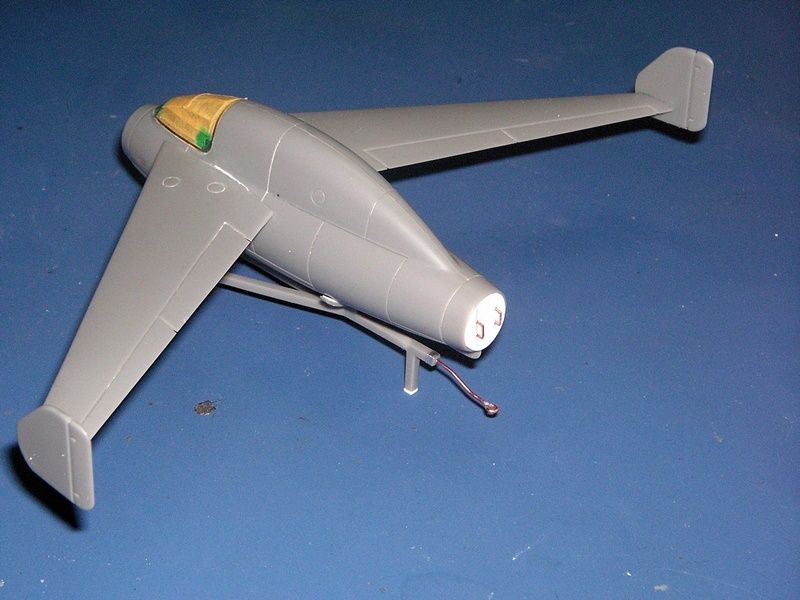
For those who like this kind of stuff, here's an excerpt from the Konpeki no Kantai animation showing how the Katsuodori could have been put to use. The a/c depicted looks more like an Okha but the concept is pretty much the same.
https://youtu.be/X5vIGnk3XJ8

Well, there!

The canpoy was attached with liquid cement, a good, airtight joint. You can see on the pic how well you can see the cockpit detail.

Now it was time to turn to the exterior details and stuff, starting with the rocket boosters.

The exhaust lips were thinned to scale and we're good to go!

BTW, the Japanese RATOGs weren't very reliable. They had plenty of trouble fine-tuning them. One can only imagine what would have happened if the placement was slightly off-axis or if there was a lag in ignition time...
Next the FOD covers: simple styrene discs with copper wire grab handles. I glued some supports on the inside of the intake and exhaust so that when the covers are put in place at the end of the build they don't fall into the fuse with no way of retrieving them...

The trolley was detailed somewhat with rubber cushions, a lunette ring and weld seams (made from stretched sprue softened with liquid cement and shaped with a sharp blade) where there were unsightly gaps.


This being a prototype the gun ports were removed by filling them.


For those who like this kind of stuff, here's an excerpt from the Konpeki no Kantai animation showing how the Katsuodori could have been put to use. The a/c depicted looks more like an Okha but the concept is pretty much the same.
https://youtu.be/X5vIGnk3XJ8
Very cool Mike. 

Thank you all for the nice comments!
Swordsman, the ramjet was (supposed to be) the main powerplant but a ramjet has to have a minimum speed to start working so the a/c needs auxiliary power to take off, in this case solid rocket booster. Those work for a few seconds, 5 to 10, and are then jettisoned. By that time the a/c has reached the minimum speed for the ramjet to kick in.
During WW II, these were all touch and go stuff. See the Me 163, more pilots killed in accidents than by enemy fire. But after the war they did become an exact science, not in small measure thanks to Werner Von Braun. Many of the spacecraft launching rockets such as the Atlas use solid rocket boosters. RATO (Rocket Assisted Take Off) were also amply used once they became reliable devices.
As to the ramjet, it never saw widespread use on classic a/c such as fighter but did see some use on cruise missiles as well as research a/c.
M
Swordsman, the ramjet was (supposed to be) the main powerplant but a ramjet has to have a minimum speed to start working so the a/c needs auxiliary power to take off, in this case solid rocket booster. Those work for a few seconds, 5 to 10, and are then jettisoned. By that time the a/c has reached the minimum speed for the ramjet to kick in.
During WW II, these were all touch and go stuff. See the Me 163, more pilots killed in accidents than by enemy fire. But after the war they did become an exact science, not in small measure thanks to Werner Von Braun. Many of the spacecraft launching rockets such as the Atlas use solid rocket boosters. RATO (Rocket Assisted Take Off) were also amply used once they became reliable devices.
As to the ramjet, it never saw widespread use on classic a/c such as fighter but did see some use on cruise missiles as well as research a/c.
M
phantom II
Master at Arms
Here's a French test plane .
https://www.youtube.com/watch?v=NHL6TsVTQFg
Cheers, Christian B)
https://www.youtube.com/watch?v=NHL6TsVTQFg
Cheers, Christian B)
phantom II
Master at Arms
Here's a French test plane .
https://www.youtube.com/watch?v=NHL6TsVTQFg
Here's another:
http://www.military.com/video/aircraft/military-aircraft/trident-rocket-fighter/810142961001
Lookout for those French cars
Cheers, Christian B)
Check out the mirror finish...
phantom II
Master at Arms
Check out the mirror finish...
There are models of those if you want to work with shiny stuff again.
Cheers, Christian B)
a@Swordsman, so that was the misunderstanding. All clear now.
The Leduc was one of those early 50s experiments around ramjets that led to nothing. As a design it's never been a fave of mine. As to the Trident, that was rocket plus turbojet. Nicer plane, methinks. But the one I prefer among those French birds, which is a ramjet plus trubojet, is the Nord 1500 Griffon:
https://youtu.be/ttqbnaBipmE
The Leduc was one of those early 50s experiments around ramjets that led to nothing. As a design it's never been a fave of mine. As to the Trident, that was rocket plus turbojet. Nicer plane, methinks. But the one I prefer among those French birds, which is a ramjet plus trubojet, is the Nord 1500 Griffon:
https://youtu.be/ttqbnaBipmE
Sherman 18
Master at Arms
Liking the work! 

Skinny_Mike
Well-known member
Amazing detailing!


Similar threads
- Replies
- 50
- Views
- 5K
- Replies
- 4
- Views
- 937
- Replies
- 8
- Views
- 1K
- Replies
- 41
- Views
- 5K


